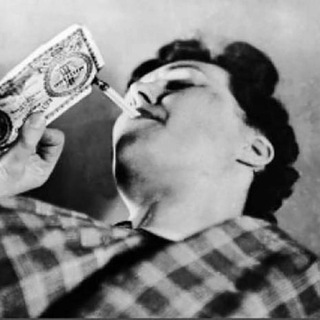This media is not supported in your browser
VIEW IN TELEGRAM
How it goes exponentially. Inflation in Weimar Republic
Daimler Notgeld or "Emergency Money". 3 billion marks in the end of October 1923 shouldn't be enough for buying a car. The purchasing power of the Daimler Notgeld might be not enough to change tires. Who knows about changing oil.
Item info
Item info
Weimar Artifacts
Kaiser's eagle on the 1908's Reichsbanknote. Gorgeous isn't it? This is because at that time German Empire were running on 1-to-1 gold standard and Reichsmarks were "Mark gleich Mark". It was a catchphrase during and after World War I indicating public confidence…
The flip-side is no less gorgeous. Banknote designer Paul Thumann primarily worked as an illustrator, producing plates for books by Goethe, Tennyson, Chamisso, Heine and many others. The bill also circulated in Weimar Germany, although it had far less value 📉
The "Darlehnskassenschein" loan notes were issued in Germany between 1914 and 1922 by the Reich Debt Administration (Reichsschuldenverwaltung). Formally, these notes were not "real" banknotes, but had to be accepted by all public treasuries as a means of payment. With the start of their issuance at the start of World War I, these loan notes were legally covered by loans on industrial and agricultural goods, but like all other means of payment, they were not redeemable for marks-gold.
What is “Bauhaus”? This is the name of German design school which created industrial design as such. By strange coincidence it was created in the very tragic times. Although, may be it wasn’t. People’s needs do not decrease if the currency devalues rapidly. It appears to be quite opposite: consumers demanded for goods to be cheap and functional and Bauhaus addressed it.
Read More
Read More
💸 In 1922 it (issuance of Emergency Money) rose to 1,295 milliards, and, in October 1923, reached the sum of 25 trillions. By the middle of November 1923, it had risen to 92 trillions, and at the same time the total amount of all kinds of emergency "Money in circulation topped the figure of 500 trillions.
"Great Inflation: Germany, 1923" by William Guttman and Patricia Meehan
"Great Inflation: Germany, 1923" by William Guttman and Patricia Meehan
Not only in Weimar. #inflation happened in Soviet Union at the same time approximately.
100 000 Rubles of young Soviet Republic.
"Backed by everything Republic has"
100 000 Rubles of young Soviet Republic.
"Backed by everything Republic has"
One interesting reasoning for issuing notes of smaller denomination was in the fact that coins (silver and gold in the first place) were driven out of circulation because paper notes were depreciating simultaneously. Like in Weimar Republic rapidly depreciating currency paradoxically lead to “lack of a circulating medium”.
Full Story
Full Story
This media is not supported in your browser
VIEW IN TELEGRAM
Weimar's (red) wasn't as bad as Zimbabwe's (blue) hyperinflation 💸
This is indexed price. For the Weimar's gold mark price is taken as an index price and for Zimbabwe's it is obviously US dollar 💲
This is indexed price. For the Weimar's gold mark price is taken as an index price and for Zimbabwe's it is obviously US dollar 💲

